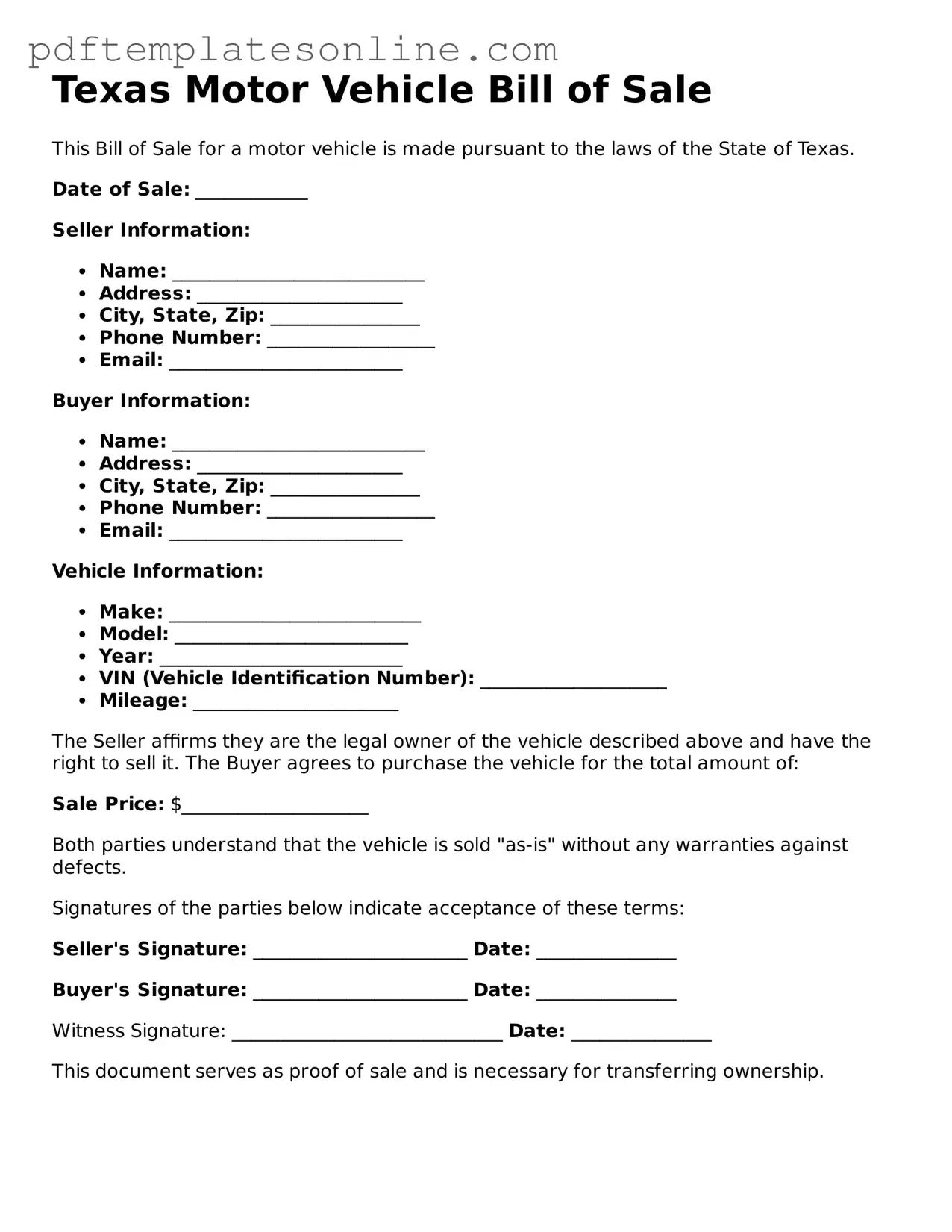Filling out the Texas Motor Vehicle Bill of Sale form may seem straightforward, but many individuals make common mistakes that can lead to complications down the line. One frequent error is neglecting to include all necessary information about the vehicle. Buyers and sellers must ensure that details such as the Vehicle Identification Number (VIN), make, model, and year are accurately recorded. Missing even one of these elements can create confusion and potentially invalidate the sale.
Another mistake often seen is the failure to provide complete personal information for both the buyer and the seller. This includes names, addresses, and contact numbers. Incomplete or incorrect information can hinder communication and may cause issues if legal disputes arise later. It’s essential to double-check that all names are spelled correctly and that addresses are current.
Many people also overlook the importance of signatures. Both the buyer and seller must sign the form to validate the transaction. Without these signatures, the document may not hold up in legal situations. Additionally, some individuals forget to date the form. A date is crucial as it establishes when the transaction took place, which can be important for tax purposes and vehicle registration.
Another common pitfall is not providing a sales price. While it might seem trivial, including the purchase price is essential for tax calculations and future reference. Leaving this section blank can lead to misunderstandings and complications with the Texas Department of Motor Vehicles.
People sometimes make the mistake of not keeping a copy of the completed Bill of Sale. After signing, both parties should retain a copy for their records. This document serves as proof of the transaction and can be invaluable if any disputes arise later regarding ownership or payment.
Finally, some individuals fail to understand the implications of the Bill of Sale. This document is not just a simple receipt; it is a legal record of the transaction. Misunderstanding its importance can lead to issues with title transfers or liability for the vehicle after the sale. It’s crucial for both parties to understand their rights and responsibilities as outlined in the Bill of Sale.
